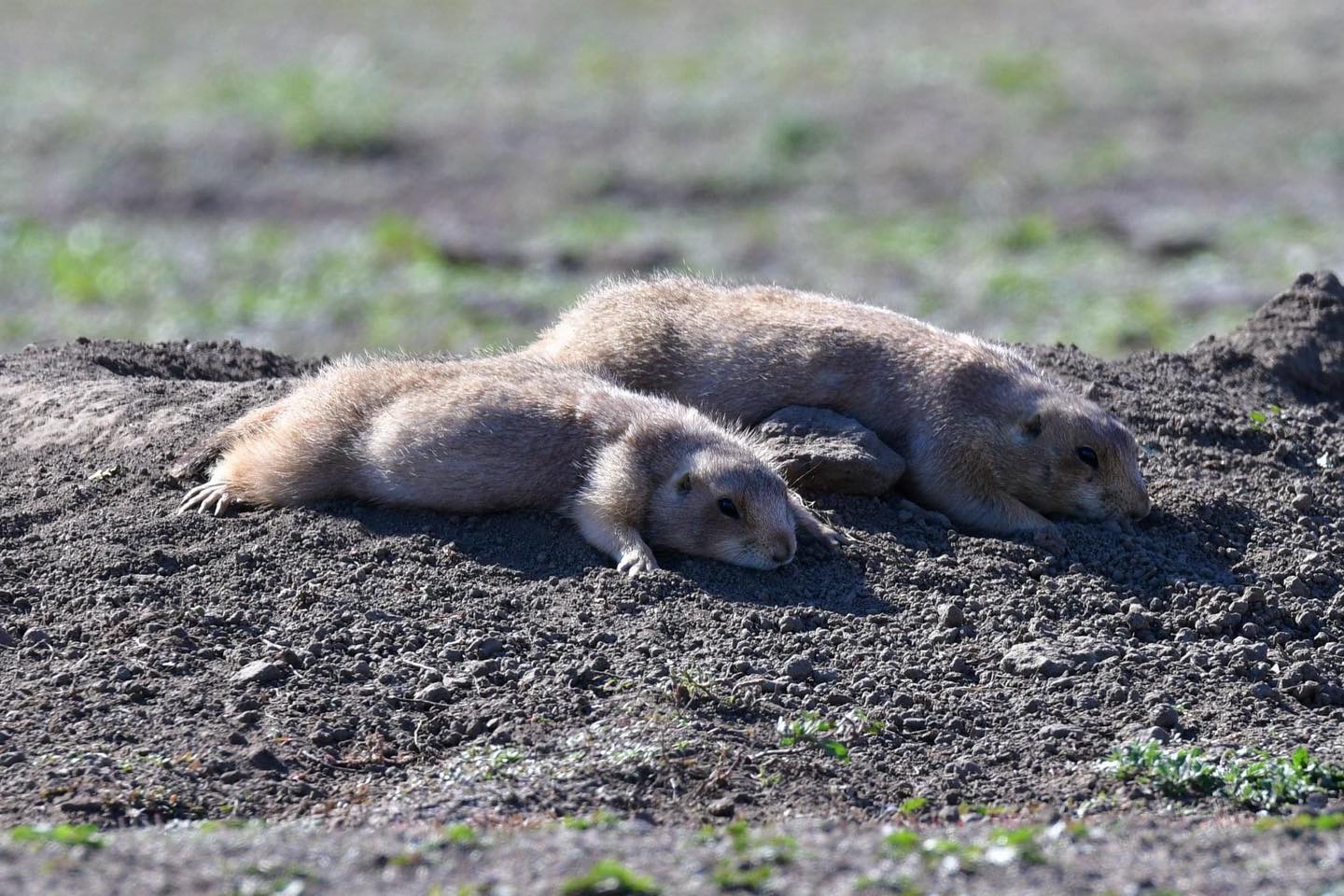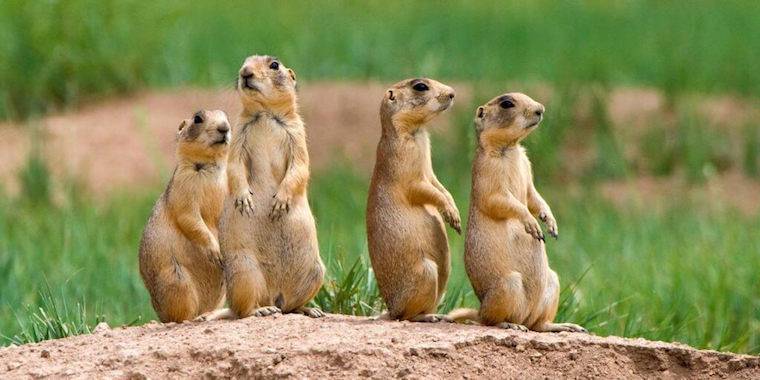Have you ever stepped outside into your backyard, only to find a group of prairie dogs staring right back at you? These cute and furry creatures may seem harmless, but they can wreak havoc on your yard and garden.
Not only do they dig extensive networks of burrows, but they also eat away at your plants and flowers, leaving your once-beautiful landscape looking like a barren wasteland. If you’re tired of sharing your yard with these pesky critters, then it’s time to take action.
In this blog post, we’ll show you how to get rid of prairie dogs in your yard once and for all, so you can enjoy a beautiful and thriving outdoor space. From natural repellents to humane traps, we’ll cover all the options available to help you say goodbye to your prairie dog problem.
Identifying Prairie Dogs

The easiest way to identify and distinguish prairie dogs from other similar-looking rodents is through their appearance and behavior.
These tiny, burrowing rodents native to North America’s grasslands live in colonies/towns. They belong to the family Sciuridae and are closely related to squirrels. A prairie dog town can have thousands of prairie dogs, each playing a specific role in the colony.
Also read: How to get rid of chipmunks in your yard
These tiny critters are herbivores whose diet consists mainly of grasses, roots, and seeds. However, they eat some insects and small animals occasionally. On the flip side, they are essential food for many predators, including hawks, eagles, coyotes, and badgers.
Size
Prairie dogs are relatively small rodents, measuring 12 to 16 inches long, including their tail.
Fur
Prairie dogs have relatively short, coarse, brownish-gray fur with lighter-colored bellies.
Body Shape
These rodents have a compact, sturdy build with short legs and a short tail.
Behavior
You often see prairie dogs standing upright on their hind legs, scanning the horizon for predators. One of prairie dogs’ unique features is their elaborate communication system that comprises various vocalizations, including barks, yips, and chirps.
They also use different calls to alert their colonies of the presence of predators. For instance, they produce a high-pitched “jump-yip” call to indicate the presence of aerial predators.
Habitat
Prairie dogs live in open grasslands, prairies, and meadows with relatively low vegetation cover.
Note
Since they are burrowing animals, you may see burrow entrances around their colony. You may also see signs of grazing or trampled vegetation around the burrows. Additionally, if you find other wildlife, such as hawks or eagles, circling over a grassy area, there’s a good chance prairie dogs live there.
Also read: How to Get Rid of Moles in Your Yard
Gopher burrows are typically plugged, while prairie dogs keep theirs open. On the other hand, groundhogs can be twice the prairie dogs in size and live in smaller groups (2 to 3 individuals).
Negative Impact Of Prairie Dogs
Prairie dogs promote biodiversity, nutrient cycling, and soil health and aid in carbon sequestration. However, they also have negative impacts.
a) Vegetation Damage
In an agricultural setting, prairie dogs usually eat crops such as alfalfa, wheat, and soybeans, causing a significant dent in farmers’ yields and causing economic losses. They can also consume the grass and other vegetation in your lawn or garden, creating bare patches and damaging your property.
b) Compete With Livestock
Prairie dogs can compete with livestock like cows, goats, and sheep for forage, reducing the amount of food available for livestock. The effects of this are reduced weight gain and production in livestock.
c) Soil Erosion
Prairie dogs burrow extensively, creating intricate systems for shelter, protection, and foraging. However, this action usually leads to slopes and banks destabilization and soil erosion.
Prairie dog burrows can also create safety hazards by digging holes that people and pets can trip and fall into.
d) Disease Transmission
Prairie dogs can be carriers of various diseases transmitted to humans and pets. For instance, they can carry fleas transmitting diseases like bubonic plague. They can also transmit diseases like monkeypox and tularemia.
e) Unsightly Droppings
These rodents can leave droppings on lawns, which are unsightly and create hygiene concerns.
How to Get Rid of Prairie Dogs

Eliminating prairie dogs can be challenging because they multiply fast, and older ones actively avoid traps. However, you must get rid of them even if you only see one in your lawn or garden because spotting one means you are probably dealing with a prairie dog colony.
Also, choosing a humane and environmentally friendly approach is essential. These are:
1. Instal Fences
Installing a fence helps keep prairie dogs from specific areas like gardens and lawns. Make sure you pick the right fence (it should extend at least 18 inches below the ground to prevent burrowing and a minimum of 3 feet high).
Furthermore, choose a fence that blends with the surroundings or one that you can decorate with other materials or plants.
Also, inspect and maintain it regularly, sealing any holes you find.
2. Use Repellents
You can also apply natural repellents around your property’s perimeter or near the burrow entrances to deter prairie dogs. I’ll discuss prairie dog repellents in detail below.
3. Trap and Relocate
You do not have to kill prairie dogs to get them out of your property when you can capture and release them. This humane approach entails using live traps such as cage traps and box traps. Make sure you pick a trap large enough to hold these rodents and with a door to keep them in.
Also, attract the prairie dogs to the live traps using bait such as fresh fruits or vegetables. It would be best to disguise or rough up the traps to keep them from being too shiny since prairie dogs stay away from unnatural things.
Position your trap near burrow entrances and other places these rodents are active, then wait. Once trapped, relocate them to a suitable habitat away from human development.
Monitor your property for a couple of days after releasing them to ensure they do not come back.
4. Fumigate Burrows
This method involves injecting gas into the prairie dog burrows system to kill them. While it can be effective, it is best done by a professional because it entails using toxic gases that can harm the environment and other animals.
Also, fumigate these rodents early in the morning or late evening when prairie dogs are active. Furthermore, avoid fumigating during rainy or windy days to avoid dispersing or rendering the gas useless. Remove the dead prairie dogs afterward and fill up the burrows to keep these rodents from returning.
5. Habitat Modification
Altering the environment to make it less appealing to prairie dogs helps keep them away. Here’s how to make your home unattractive to these rodents.
- Vegetation management– let your lawn grass grow longer or plant less attractive vegetation because prairie dogs prefer areas with short grass.
- Physical barriers– establish barriers, like mesh or fencing, to keep these rodents from entering your home.
- Burrow filling– take out the prairie dog’s shelter and protection by filling their burrows.
- Habitat fragmentation– Break up large areas of suitable habitat into smaller patches, making it harder for prairie dogs to establish large colonies.
- Habitat enrichment– encourage prairie dogs to move to other areas by enhancing nearby habitats with food and shelter sources these rodents prefer.
Legal Considerations
You must consider the local, federal, and state legal regulations when handling prairie dogs to avoid breaking any laws. The Endangered Species Act protects Prairie dogs in some parts of the United States, like Utah and New Mexico. However, some areas consider them a pest species hence subject to management or removal.
It’s usually up to the owner to deal with prairie dogs on their private property. However, some municipalities or counties have regulations regarding the removal or relocation of these rodents. Therefore, check with local wildlife authorities and government offices beforehand.
Also, note that some federal and state laws regulate using certain methods, such as trapping and relocation, to prevent animal cruelty.
How to Deter Prairie Dogs
There are plenty of effective ways to deter prairie dogs, and while they can be effective if used correctly, they are not always foolproof. Therefore, increase the deterrents’ effectiveness by incorporating them with other methods, such as trapping and relocation or fumigation.
Here are some methods to deter prairie dogs.
i) Noise and Vibrations
You can successfully deter prairie dogs using loud noises and vibrations from heavy machinery, sonic devices, ultrasonic devices, and vibrating stakes.
ii) Scents
Use prairie dogs’ keen smell against them by deterring them with the pungent smell from various substances. These include vinegar, cayenne pepper, dryer sheets, predator scents, garlic, coffee grounds, and peppermint oil.
iii) Visual Deterrents
Visual deterrents can help discourage prairie dogs from entering and making your property their home. Depending on the repellent, it can either cause a visual disturbance or threaten these rodents.
For instance, reflective surfaces like aluminum foil or shiny tape can disorient and make them uncomfortable.
On the other hand, decoys resembling prairie dogs’ natural predators, like owls or hawks, make them feel threatened.
Conclusion
Typically, prairie dogs prefer living in open grasslands and prairies, but sometimes they invade private properties with the ideal conditions for their survival. So, if you find them in your garden, farm, or lawn, get rid of them through capture and release, fumigation, or fencing. Also, fence properly and use deterrents to keep them away.

Hey there, I’m Derek Schew, a writer for Lawnholic.com, where we cover everything and anything related to lawns. As someone who’s spent countless hours tending to my own lawn, I’m passionate about sharing my knowledge and helping others achieve the perfect yard. From lawn care tips to product reviews, I’m committed to providing our readers with the most accurate and up-to-date information available. So whether you’re a seasoned lawn enthusiast or just getting started, I invite you to join our community and discover the joys of a lush, green lawn.
